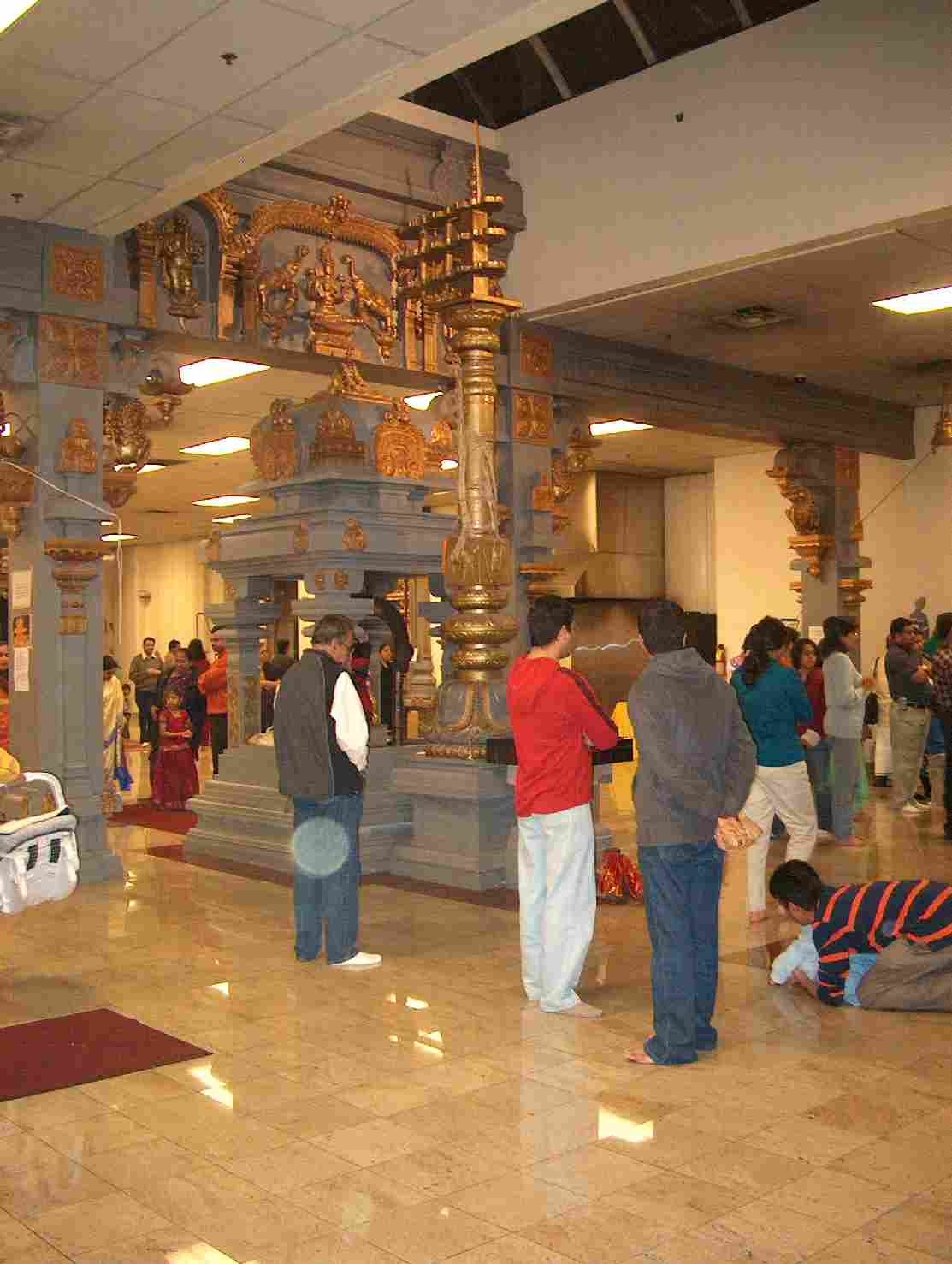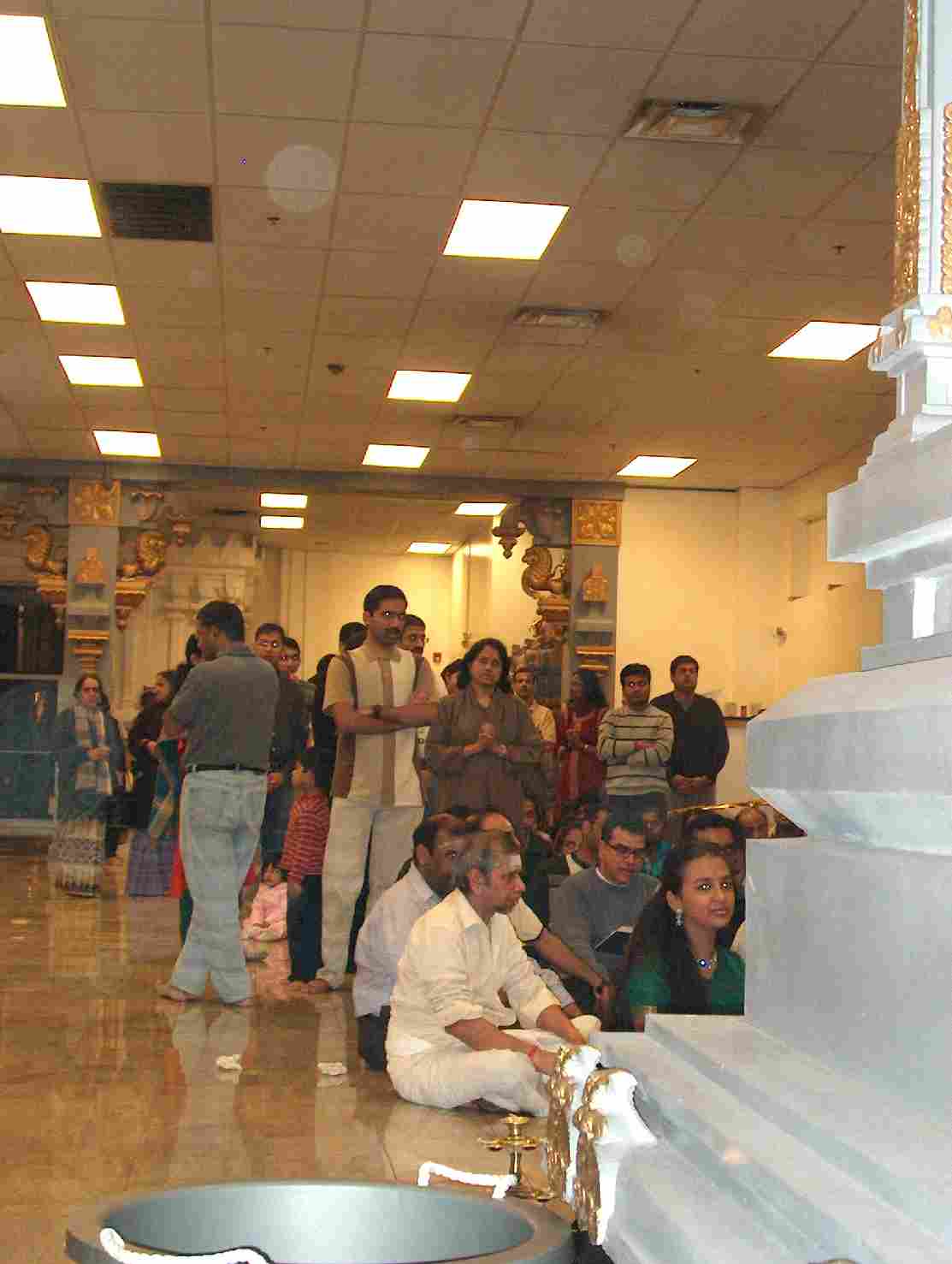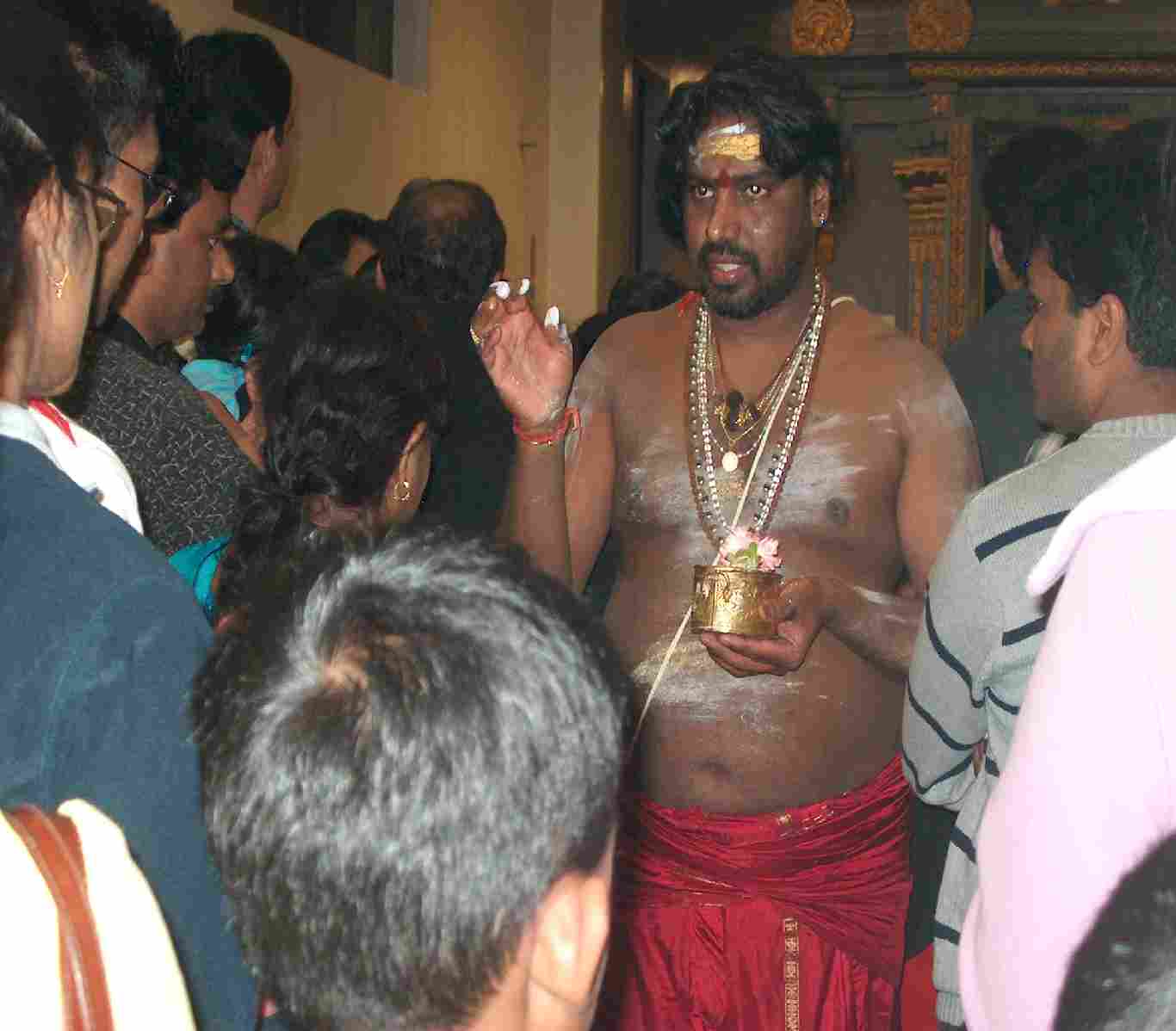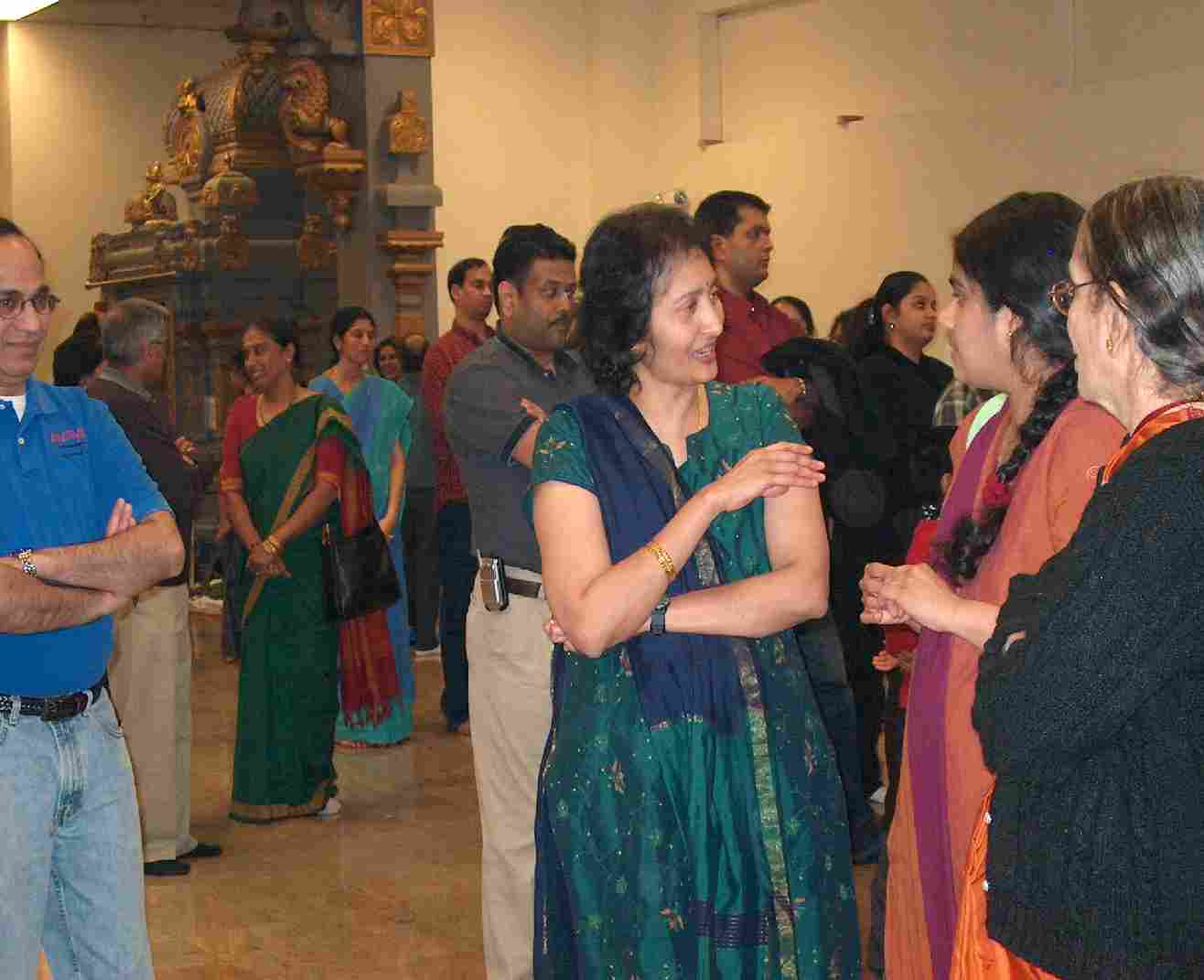Contribute
| Guest Column - Hinduism In The Public Sphere: Removing Obstacles And Creating Community |
Tulasi Srinivas
05/01/2006
On a recent Tuesday evening I went to the Shri Lakshmi temple in Ashland, Massachusetts to celebrate Sankastha Chathurthi. This festival honours Ganesha, who, according to Hindu myth, lost his head in a quarrel with his father, the Hindu god Shiva, who replaced it with an elephant head. For Hindus, the charming, chubby, elephant headed gourmand is the deity who removes all obstacles, and every puja (worship sequence) begins with his propitiation.
The Sankastha Chathurthi celebration is the termination of a day of fasting proscribed for Ganesha devotees on fourth day of second fortnight of every month. And devotees believe that performing the Sankastha puja mitigates problems and removes obstacles in their lives. Devotees usually fast for the whole day and break the fast after worshipping the deity Ganesha in the evening. Since there are many Hindu myths where Ganesha is in conflict with the moon, many Hindus believe that looking at the waning moon on that night is very auspicious.
On the evening I went to the temple, it was overflowing with South Asian Hindus of every ethnic, caste and regional group in India; Maharashtrians, Gujaratis, South Indians, both from Chennai and Bangalore, Punjabis, and Bengalis all thronged to get darshan of Ganesha on this auspicious occasion. I heard Marathi Bhajans in the folk style, Vedic sanskritic hymns sung in the south Indian style, and some Bengali, Gujarati, Punjabi and Telugu conversations. At my rough estimate, over two hundred and fifty devotees visited the Shri Lakshmi temple between 7.30 p.m. and 9 p.m. that evening to get darshan of Ganesha during the Mahamangalarathi (grand offering of the camphor flame).
While most of the devotees were at the Hindu temple for darshan of Ganesha, many if not all, worshipped in front of all the deities in their respective shrines (sannadhi), paying special attention to their ishta devata (deity of personal choice) offering arathi, and gifts of fruits, flowers and home made sweets which were offered as naivedyam (sacred food) and then distributed as prasadam (consecrated food) amongst the devotees present.
The temple is called the Shri Lakshmi Temple after the main deity Lakshmi (the consort of the Hindu god Vishnu and the Goddess of Wealth) of the Mahamantapam (central hall). However, a full panoply of gods and goddesses are represented at the temple in their own sanctum santorii: to the left of the central shrine, is the shrine of Ganesha with his vahanam; (sacred vehicle) the shrew, facing him. To the right is the shrine to Vishnu in the form of Srinivasa (fondly called Balaji), the powerful deity of the temple of Thirupathi in South India. Facing the central Shri Lakshmi Sannadhi is a small shrine dedicated to Vishnu’s vahanam; Garuda, or the divine Brahmani kite. Within the Mahamantapam is also a family group of Shiva, in the form of the dancer Nataraja, his consort Parvati, and their two sons Ganesha, and Skanda; the lord of the forest in a separate shrine that also houses the lingam (a phallic stone symbolic of Shiva). Skanda also occupies a separate shrine located in the entry mantapa.
In the Shri Lakshmi Temple, the entry mantapa in front of the Mahamantapa houses more shrines dedicated to both Shaivite and Vaishnavite gods and demi-gods; the monkey god Hanuman whom devotees worship for strength; the nine planets or the nava grahas; and a separate shrine to the deity Ayappa, a forest god whose temple located in the hills of Sabarimala in the Southern Indian state of Kerala, has an annual devotional pilgrimage for men and non menstruating women, that draws over half a million devotees from all over India. The entry mantapa houses the flag staff of the main deity (the dwaja sthambha) and the bali peetham or sacrificial stone on which consecrated food (naivedyam) is placed after being offered to the deity, as a food offering to ancestors.
When one visits the Shri Lakshmi temple of Ashland in Massachusetts, it may appear that the temple is dominantly South Indian in culture; the architecture is of the Dravidian temple style and the priests are primarily from south India, from Chennai and Bangalore; even the deities appear crafted in the South Indian style, hewn from the black granite common in South India, as opposed to the delicate, white, marble figures common in North Indian temples in India. The Ashland temple committee has worked hard to overcome this bias in perception in many ways; most recently by building a new 1008 Rudra Homa lingam covered in gold where Northern Indian devotees can perform the abhishekam (bathing of the deity)themselves as is common in North Indian temples. For those who are not Hindu in faith but are interested in the temple, the committee has an informal system of tours that are conducted on request, that explain the salient features of the Hindu faith, and of the architecture and symbolism of the temple.
A temple is of course not the building, not the priest, not the committee, and no, not even the deity, but the strength of the temple is the devotees, and in Ashland the devotees are pan Indian in origin, and they come together in new England to celebrate an age old, yet vibrant, religious tradition. The Hindu temple provides a valuable sacred and social bridge for Hindus living in America. It is a invaluable Indo-American public space where Hindu believers of all ethnicities, castes and regions within India, can come together in tolerance to worship, to talk, to socialize and to cement community bonds.
For further information on the Shri Lakshmi Temple in Ashland, Massachusetts, visit their website at http://www.nehti.org/.
You may also access this article through our web-site http://www.lokvani.com/



